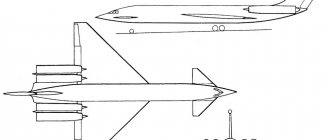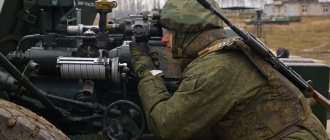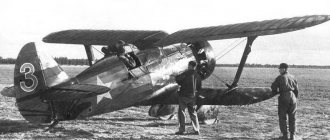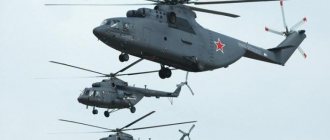The future of barrel artillery
Author: Alexey Borzenkov
We live in interesting times now. On the one hand, the troops of all countries are overwhelmed with equipment from the late First Cold War (the same M109, Acacia, Grad, and even the PzH 2000 - all the brainchild of that era), which is being actively modernized, on the other hand, there are more and more robots, space has become full-fledged domain (according to the US classification), where databases are maintained, information flows also become weapons. After the battles in Karabakh, artillery was once again buried, and the future began to be considered for attack UAVs and kamikaze drones. But, meanwhile, the Future Indirect Fires 2021 conference was held in Bristol in the summer, where the problems of developing Western artillery were discussed; In the USA, Russia, Israel, China, South Korea and other countries, active work is underway on weapons, which may now seem like science fiction to many. So let's take a look at what lurks in the darkness of the dark future.
Down with towed guns!
What are the benefits of towed systems? They are much cheaper than self-propelled guns; in local conflicts, you can safely throw shells in the open air and there will be no crowding in a cramped battlefield or gas pollution. If battles take place in a wooded area, they can be transported to any point by helicopters. And just a battery of 105- or 122-mm howitzers for the landing, delivered on time, will make their life much easier. But in the event of a serious mess, they will become easy prey for a developed counter-battery system. Therefore, a variety of self-propelled guns are being actively created. The replacement is already actively underway in China, where wheeled howitzers are arriving in dozens. Germany now has only self-propelled guns (but it’s not clear with them whether they have developed so much or have degraded). In the USA, there is an active competition for a 155-mm wheeled self-propelled gun for the contingent in Europe, which should take the place of the M777. We are testing Malva and Coalition-SV-KSh, which should replace Mstu-B. Actually, in the USSR they wanted to do this back in the 80s, but for technical and financial reasons it didn’t work out, and then the Union didn’t exist.
An experimental robotic mortar system that allows firing both direct fire and from a closed position, Fort Benning, July 22, 2017
105MM MWS Hawkeye - development of the idea of a self-propelled gun based on a Humvee, but with a crew and a full-fledged howitzer
2S43 Malva is one of the candidates to replace Msta-B
An experimental robotic mortar system that allows firing both direct fire and from a closed position, Fort Benning, July 22, 2022
Wheels are in fashion
Of course, the idea of wheeled self-propelled guns is far from new, and in the USSR they planned to make them en masse back in the 30s. But it didn’t work out. Cars of those years could not withstand high recoil, reliability was mediocre, and there were no all-wheel drive trucks with wide tires. But now heavy trucks can transport a couple of dozen tons, have a huge range, quickly move along highways without restrictions, and carry at least some kind of anti-fragmentation protection. The cost of producing and operating the chassis is low. That’s why they are now trying to put everything they can on wheels. All more or less large countries are doing this. Ahead of the rest of the world is China, which has recently produced an insane number of models of wheeled self-propelled guns. Russia has also rolled out many different options - these are the already mentioned 2S35-1 Koalitsiya-SV-KSh, 2S43 Malva, as well as the 120-mm mortar gun 2S40 Phlox, 82-mm mortar 2S41 Drok. The last two vehicles are interesting because we have finally created self-propelled mortars, something that makes NATO armies strong. 120 mm mines can be very, very unpleasant for infantry, especially now, when kilometers of trenches with dugouts of three rolls are rare. Many wheeled self-propelled guns have been presented in Europe recently; their Dans, Archers and Caesars became, in fact, the first signs in this direction of development.
The 155 mm PLC-181 is one of many wheeled self-propelled guns created in China at the beginning of this century
Development of the famous Czech self-propelled guns - DANA M2
Self-propelled gun-mortar 2S40 Phlox. Perhaps they will displace 2B11 Sani from the battalion level
Range is everything
For a long time, the OFS firing range of 105-155 mm guns and howitzers fluctuated around 11-25 km. However, mass projectiles still fly at such a distance. But the new generation of European 52-caliber howitzers in the 90s, the icon of which was the PzH 2000, opened the fashion for increasing the firing range by all means. For conventional projectiles, this is an increase in charge power, both due to an increase in volume and due to the use of modern gunpowders. ARS is being improved, and engine sizes are constantly increasing. Aerodynamics are constantly being improved. Recently, the length of the trunk has begun to increase again. The American self-propelled gun XM1299 has a barrel of the XM907 howitzer extended to 58 calibers, and the Germans are making as many as a 60-caliber gun. Thus, OFS with a range of 30 km are already commonplace; they intend to storm the 48 km mark. ARS have reached 70 km, which has already become the bar for everyone, and 100 km are already on the horizon and the creation of something in between a projectile and a guided missile. This is how we are developing DVAB (long-range precision artillery ammunition), which, as they threaten, will reach 170 km. It seems like a fantasy, but naval guns are already quite capable of conquering such ranges. The Italian 127-mm OTO Melara with a 64-caliber barrel can fire VULCANO shells at 120 km (however, the mass of explosives suffers greatly due to the fact that the projectile is sub-caliber), and the 76-mm - up to 40. The Koreans are creating a winged projectile -a missile with a range of as much as 500 km! And all this in 155 mm caliber. But the most ambitious project in general was the American Strategic Long Range Cannon (SLRC) with a range of 1600 km, but then, however, this year they came to their senses and closed up shop.
155 mm rounds for PzH 2000 at demonstrations
ХМ1299 undergoing testing. This option also has an automatic loader
It’s worth adding to everything that ammunition with extreme firing ranges is still extremely expensive and rare, so the main ones are still the most ordinary OFS. The Americans have the most numerous ARS M549, but the firing range is “only” 30 km.
Automation and robotization
In general, this happens in all areas of human life and, although this is, IMHO, the most important aspect of the development of barrel artillery, it is left to the taste. This includes several categories - these are the guidance and loading systems in self-propelled guns themselves, and the processing of information in the vehicles of battery commanders, divisions, motorized rifle and tank crew commanders, and in itself the receipt of information from reconnaissance, and the means of data exchange, including via satellite. All this affects how quickly and accurately self-propelled guns will be able to process the enemy and avoid a retaliatory strike. Although automation of fire control on ships originated in the 10s of the last century, on land it began to develop sluggishly in the 60s with the advent of the M18 FADAC computer in the United States. It was only in the 80s that our 2S7M Malkas received their own automation systems. Indeed, the leap occurred in the 90s with the advent of 2S19, M109A6, PzH 2000, K9 and similar vehicles. Since then, development has leapfroggedly reached such a level that when using reconnaissance and fire complexes (ROC) with UAVs, seemingly old Acacias, but upgraded to 2S3M2, can extremely quickly work on a target detected by a drone. The crew actually only needs to load the howitzer and fire. The German wheeled RCH 155 works extremely quickly - it only needs 20 seconds after arriving at the firing station before firing begins. In the USA, the existing M109s (the modification was not specified) were able to open fire 30 seconds after detecting a target when testing satellite data transmission systems.
M18 FADAC of the 25th Infantry Division in Vietnam. Below is a video of its deployment.
German 155-mm experimental self-propelled gun RCH 155 based on the Boxer armored fighting vehicle
And where does this all lead? That's right, to the creation of self-propelled robots. In principle, our Coalition is capable of remote control of fire, but it’s still better when the crew is sitting there. So far, the missile forces are the pioneers in this direction. And this is an American unmanned launcher of NSM anti-ship missiles (in the future, the famous Tomahawks) on the MRAP Oshkosh 4x4 JLTV chassis for the ROGUE (Remotely Operated Ground Unit for Expeditionary, I hope no one gets confused in the abbreviations). They created it very quickly, but most likely secretly. A year ago there were only renderings, but this summer they posted photos from tests in California at the Point Mugu naval training ground, which, apparently, took place in November 2022. All this is connected with increasing the mobility of the ILC for battles in the Arctic and on the islands of the Pacific Ocean , where the deployment of heavy equipment is extremely difficult. The British offer fully robotic barrel artillery - a 105-mm howitzer on a light tracked chassis. But there is no specific information yet. Also, in 2017, the Americans tested an unmanned self-propelled mortar based on a Humvee (photo above), but we have not heard about the continuation of work. Undoubtedly, in the next decade we will see a lot of self-propelled guns. In general, there is an opinion that the current generation of weapons, including 3rd generation MBTs and 5th generation aircraft, are just a transitional temporary link between the machines of the end of the First Cold War and the army of drones of the future.
ROGUE launches the Norwegian NSM (Naval Strike Missile) anti-ship missile during testing
The promised video of the deployment of a data processing computer for the M18 FADAC field artillery:
Author: Alexey Borzenkov
Original



!['Domestic small arms [studio "Wings of Russia"] (2011)'](https://knifesburg.ru/wp-content/uploads/otechestvennoe-strelkovoe-oruzhie-studiya-krylya-rossii-2011-330x140.jpg)







